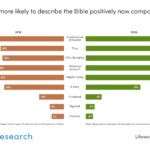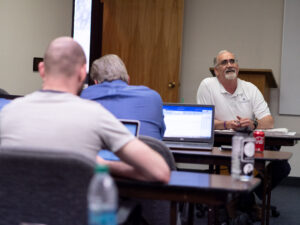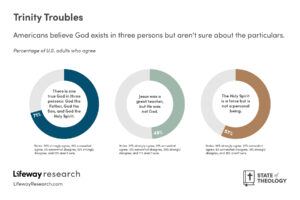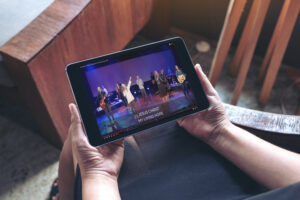
BOULDER, Colo. (BP) – Weekly Bible reading resurged 12 points this year in the U.S. after a 15-year low, with Millennial and Gen Z men leading the way, State of the Church researchers said in their November release.
Millennials and Gen Z outpace the 12-point increase, with reading jumping 16 points among Millennials, half of whom now read Scripture weekly. Among Gen Z, the 49 percent who read Scripture at least weekly represents a 19-point climb, researchers said of the study from Texas-based Barna Group and Boulder-based Gloo.

Millennials read the Bible on par with Christians, matching the 50 percent of Christians who do so.
The findings show “a major rebound of Bible reading, along with a surge in usage among younger generations,” Barna Group CEO David Kinnaman said. “This aligns with other signs of spiritual interest and reinforces the finding that Christian faith and practice are experiencing a reset moment.”
Stronger contrasts are seen between genders, with 54 percent of Gen Z men and 57 percent of Millennial men reading Scripture weekly, compared to 46 percent of Gen Z women and 43 percent of Millennial women.
The young-male-driven increase reverses long held trends of more women and more Boomers reading Scripture weekly. While the 31 percent of Boomers reading the Bible weekly is up from the 22 percent in 2024, it’s drastically down from the 49 percent who did so in 2010.
But the increase in reading apparently is driven by curiosity and is not leading to an increase in belief, researchers said.
“Engagement is outpacing conviction,” Kinnaman said. “People are opening the Bible more often, but they’re still wrestling with what they believe about it.”

While 43 percent of respondents said the Bible is “totally accurate” in 2000, only 36 percent said the same this year. Less than half of Christians, 44 percent, believe Scripture is totally accurate, down from the 47 percent of Christians who voiced scriptural accuracy in 2000.
Weekly Bible reading had dropped to a 15-year-low in 2024, when only 30 percent of U.S. adults read the Bible at least weekly. Reading was down to 30 percent among Gen Z and 34 percent among Millennials that year. Weekly reading was at 28 percent among Gen Z when researchers started tracking the group as adults in 2017.
“It’s very encouraging to see more people, especially young adults, turning to the Bible,” Brad Hill, Gloo chief partner success officer said. “But this rise in interest also challenges church leaders to go deeper, turning curiosity and engagement into opportunities to help people live what they read. In an age when AI tools are providing answers to life’s big questions, it’s imperative that churches cultivate deep and durable Bible engagement habits.”
In March, State of the Church said more men than women were attending weekly worship service, reversing a trend of more women in church.
“Bible reading is rising again across generations, marking a reset to faith engagement levels we haven’t seen in a decade,” Kinnaman said. “People aren’t just curious about faith – they’re opening Scripture for themselves. This trend aligns with other signs of renewal we’ve seen in our research, like growing commitments to Jesus and increased church attendance.”
Barna and Gloo did not say what is driving the trend in reading, other than a speculation that ties it to the availability of Scripture on apps.
Researchers drew their conclusion from online and telephone interviews among 138,556 adults conducted over a 25-year period through October, as well as an additional online interviews conducted among 12,116 adults between January and October, Barna and Gloo said in a press release.
The November findings, released Nov. 6, are available here.



















